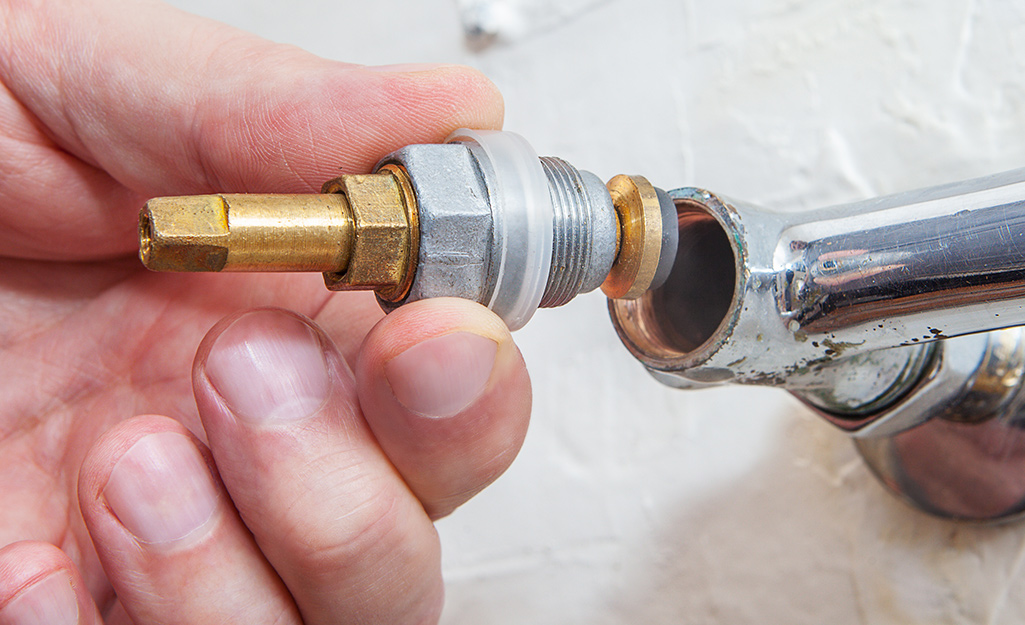What are your beliefs on Why Is It Important To Fix Your Leaking Tap/Faucet??

Dripping taps may seem like a minor inconvenience, however their influence goes beyond simply the inconvenience of the sound. From drainage to incurring unneeded financial prices and health and wellness risks, ignoring a trickling tap can result in different effects. In this article, we'll delve into why it's essential to address this usual home concern promptly and effectively.
Waste of Water
Ecological Effect
Dripping faucets contribute considerably to water waste. According to the Environmental Protection Agency (EPA), a solitary tap dripping at one drip per secondly can squander greater than 3,000 gallons of water each year. This not only pressures water sources but also influences ecosystems and wild animals dependent on them.
Financial Prices
Increased Water Expenses
Past the ecological impact, leaking taps can pump up water bills significantly. The built up wastefulness over time translates into higher energy expenses, which can have been avoided with timely repairs.
Prospective Residential Or Commercial Property Damage
In addition, long term trickling can lead to damage to fixtures and surfaces bordering the tap. Water accumulation can cause staining, corrosion, and even structural issues if left ignored, causing additional fixing costs.
Health Concerns
Mold and Mold Growth
The continuous visibility of moisture from a leaking tap develops a suitable setting for mold and mildew growth. These fungi not just endanger interior air high quality however likewise posture health and wellness risks, specifically for individuals with breathing conditions or allergies.
Waterborne Illness
Stationary water in dripping faucets can become a breeding ground for microorganisms and various other microorganisms, enhancing the danger of waterborne conditions. Pollutants such as Legionella microorganisms grow in stationary water, possibly bring about significant illnesses when consumed or inhaled.
DIY vs. Specialist Repair service
Benefits and drawbacks of Do It Yourself Fixing
While some may try to fix a dripping tap themselves, do it yourself repairs come with their own collection of challenges. Without correct knowledge and devices, do it yourself attempts can exacerbate the problem or lead to incomplete repair services, lengthening the trouble.
Benefits of Working With a Professional Plumber
Working with a specialist plumber makes sure that the underlying reason for the trickling faucet is resolved effectively. Plumbers have the proficiency and tools to diagnose and repair tap concerns effectively, conserving time and lessening the threat of additional damage.
Step-by-Step Guide to Dealing With a Dripping Faucet
Devices Called for
Prior to attempting to repair a dripping faucet, gather the essential devices, consisting of a flexible wrench, screwdrivers, substitute parts (such as washers or cartridges), and plumber's tape.
Usual Faucet Issues and Their Solutions
Identify the sort of tap and the particular issue creating the drip. Usual issues include worn-out washing machines, corroded shutoff seats, or defective O-rings. Describe maker directions or online tutorials for detailed assistance on repairs.
Safety nets
Routine Upkeep Tips
To prevent trickling faucets, do routine maintenance such as cleansing aerators, examining for leakages, and replacing worn-out parts without delay. Furthermore, think about setting up water-saving gadgets or upgrading to a lot more reliable fixtures.
Significance of Prompt Repair Works
Dealing with dripping faucets as quickly as they're observed stops additional water wastage and possible damages, ultimately saving both water and cash over time.
Impact on Residential Property Value
Perception of Well-Maintained Property
Keeping a home in good condition, consisting of addressing maintenance concerns like leaking faucets, improves its perceived worth and charm among potential customers or tenants.
Impact on Resale Worth
Qualities with properly maintained plumbing fixtures, including faucets, command higher resale values in the realty market. Resolving trickling taps can add to a favorable impression during home assessments and settlements.
Ecological Obligation
Specific Payment to Preservation
Taking obligation for taking care of leaking faucets straightens with more comprehensive initiatives toward water conservation and ecological sustainability. Every individual's activities jointly make a considerable impact on maintaining valuable resources.
Lasting Living Practices
By prioritizing punctual repair services and adopting water-saving behaviors, individuals add to sustainable living techniques that benefit both present and future generations.
Verdict
Dealing with a trickling tap goes beyond plain comfort; it's a necessary action towards saving water, lowering economic prices, and securing wellness and home. Whether via do it yourself repairs or professional support, acting to take care of trickling taps is a tiny yet impactful method to advertise accountable stewardship of sources and add to a much healthier, a lot more sustainable future.
How to Fix a Leaky Faucet: Step-by-Step Repair Guide
A leaky faucet may seem like a simple annoyance, but if it's not fixed promptly, that leak could cost hundreds to potentially thousands. From water damage to mold, mildew, and high water bills, even a tiny leak can be catastrophic if left unattended. Damage like this can even affect the overall value of your home, so it's important to take the right approach for leaky faucet repair. You may need the help of a plumber in some cases, but we've got a few tips you can try on how to fix a leaky faucet before calling the pros.
Four Faucet Types
When you're learning how to fix a leaky faucet, the first step is knowing what kind of faucet you're working with! There are four common types.
Cartridge Faucets
Cartridge faucets come in one- or two-handled varieties. In one-handled cartridge faucets, hot and cold water combines in a single cartridge. In the two-handled versions, hot and cold water are controlled separately and mixed in the faucet.
Ball Faucets
Ball faucets have a single lever you push up and down to adjust the pressure and rotate to change the temperature. A slotted metal ball controls the amount of water allowed into the spout.
Compression Washer Faucets
They're the oldest type of faucet, but they're still used in many homes — especially older ones. Compression faucets have two separate handles that, when turned, raise or lower the washer that seals a water valve. This valve stops water from flowing through the faucet when it is turned off.
Disc Faucets
Disc faucets rarely need to be repaired due to their maintenance-free design. The water flow is controlled by two discs — the upper one raises and lowers against a fixed lower disc, creating a watertight seal. If your disc faucet starts leaking, you may need to replace the seals or clean residue buildup from the inlets.
Fixing a Leaky Faucet
Step 1: Turn Off the Water
Whether you're learning how to fix a leaky bathtub faucet or how to fix a leaky kitchen faucet, always turn off the water supply to your working area when you're fixing a leak. The last thing you want is a flood added to your list of things to fix.
Look for the shutoff valves below your sink or around the tub and turn them clockwise to stop the water flow. If your faucet doesn't have shutoff valves, you may need to turn off the water for the whole house. Check to make sure it's off by turning the faucet on. If nothing comes out, you're ready to start the repair.
Step 2: Take Apart the Faucet
How you disassemble your faucet depends on the type of fixture you have. You can use a flathead screwdriver to remove the caps on top of the handle or handles for cartridge and compression faucets. Inside, you should see handle screws. Unscrew these with a screwdriver to remove the handle.
Disc- and ball-style faucets will typically have an inlet screw near the handle, and removing that will reveal the interior of the faucet.
Detach the Valve Stem
For cartridge- and compression-style faucets, you'll see the inner valve stem or cartridge once you remove the faucet handles. If you have a compression faucet, unscrew the brass valve stem. If you have a cartridge faucet, pull out the cartridge. If your cartridge has been in place for a while, it may require some tools or extra force to remove it due to mineral deposits.
Examine and Replace Parts
Once you've removed the parts, check them out to confirm what needs to be replaced. You may see corroded rubber washers, O-rings, stems, or cartridges. On a ball-style faucet, check the seats and springs for damage.
If you need to repair a leaky disc faucet, check the inlet and seals on the lower disc.
Once you determine what parts must be replaced, visit your local hardware store. Bring the damaged parts with you to ensure you can purchase the correct components to replace them.
Clean Valves and Faucet Cavity
If you've removed a stem or cartridge, you may notice mineral buildup in the faucet's threads. Use white vinegar to clean the valve seat by soaking it for a few minutes, then scrub it away with a soft toothbrush and rinse with warm water. You can also clean the interior of the faucet in the same way.
Reassemble the Faucet
Once your faucet is cleaned and the required parts have been replaced, it's time to reassemble it. Put the pieces back together and slowly turn the water supply back on. Doing this slowly is crucial because too much initial water pressure can damage the new hardware you've just installed.
https://homewarranty.firstam.com/blog/how-to-fix-leaky-faucet

Hopefully you enjoyed reading our excerpt about Why It's Important to Fix Leaky Faucets. Thanks a ton for taking the time to read our article. Kindly take the opportunity to distribute this entry if you liked it. Thank-you for going through it.